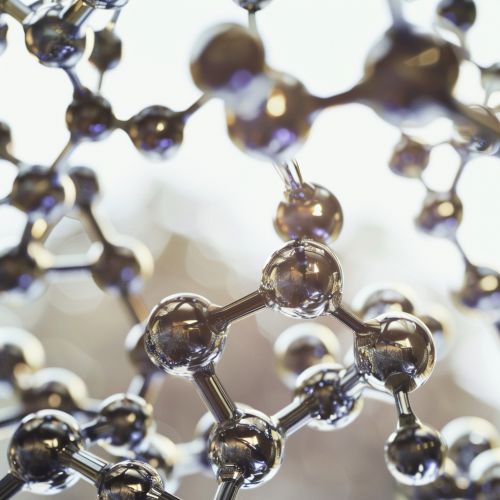Naphthopyran
Introduction
Naphthopyran is a type of chemical compound that belongs to the larger family of heterocyclic compounds. These compounds are characterized by a ring structure that includes atoms of at least two different elements. Naphthopyran is a fused ring system, which means that it consists of two or more adjacent ring structures that share one or more sides.


Structure and Properties
The structure of naphthopyran is composed of two benzene rings fused with a pyran ring. This gives the compound a unique set of properties, including its characteristic color and reactivity. The structure of naphthopyran is also responsible for its ability to undergo certain types of chemical reactions, such as photochromic reactions.
Naphthopyran molecules are planar, which means that they lie flat in a plane. This planarity is a result of the conjugated system of pi bonds in the molecule, which allows the electrons to be delocalized across the entire structure. This delocalization of electrons contributes to the stability of the naphthopyran molecule and also influences its chemical behavior.
Synthesis
The synthesis of naphthopyran involves a series of chemical reactions, starting with the formation of the pyran ring. This is typically achieved through a Diels-Alder reaction, which is a type of cycloaddition reaction that involves the reaction of a diene with a dienophile. The resulting product is then subjected to further reactions to form the naphthopyran structure.
There are several methods for the synthesis of naphthopyran, each with its own advantages and disadvantages. The choice of method depends on factors such as the desired yield, the availability of starting materials, and the specific properties of the final product.
Applications
Naphthopyran has a wide range of applications, particularly in the field of organic chemistry. One of the most notable uses of naphthopyran is in the production of photochromic materials. These are materials that change color in response to light, a property that is exploited in products such as photochromic eyeglasses and photochromic inks.
In addition to its use in photochromic materials, naphthopyran is also used in the synthesis of certain types of organic dyes. These dyes are used in a variety of applications, from textiles to printing inks.
Safety and Environmental Impact
Like many chemical compounds, naphthopyran has the potential to cause harm if not handled properly. It is important to use appropriate safety measures when working with naphthopyran, including the use of personal protective equipment and proper ventilation.
The environmental impact of naphthopyran is largely dependent on how it is used and disposed of. In general, it is important to minimize the release of naphthopyran into the environment and to dispose of it in a responsible manner.
